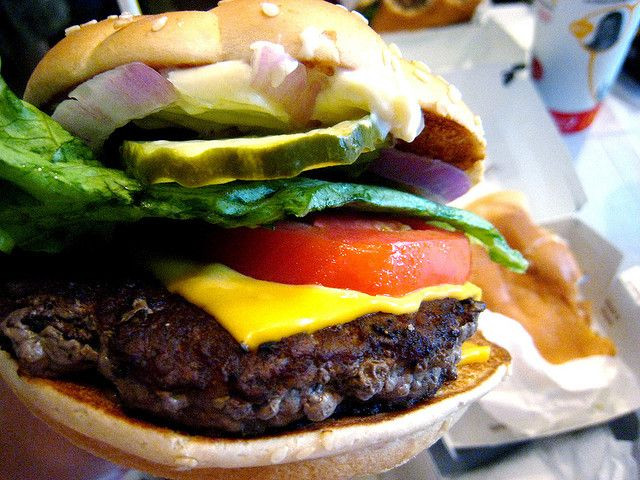Fast Food Nutrition Shows Little Change, Still Have High Levels Of Calories, Salt, And Saturated Fat

The fast food industry has been making an effort to include healthier options on its menus since 1996, but a new study from Tufts University suggests they should try harder.
Tufts’ researchers surveyed the nutrition content of cheeseburgers, French fries, grilled chicken sandwiches, and soda (all popular items) to see what kind of change, if any, fast food outlets have put into motion. While portion size, calories, and trans fat have greatly reduce, salt and saturated fat are still high. And of the 56 percent of items that have been reduced in calories, the remaining 44 percent have seen increases.
Fast foods consumed separately are healthier than consuming fast foods together as a complete meal. According to Alice Lichtenstein, lead study author, this is where it gets problematic. She and her team cited prior research that found a cheeseburger with French fries and a soda accounts for 80 percent of a person’s daily recommended calorie intake, and 139 percent of their salt intake.
"That does not leave much wiggle room for the rest of the day," Lichtenstein said.
Fast food pizza is a prime example of how some fast food chains have had worsening nutrition over the years. A recent survey found the meat lover’s option served at UK Pizza Hut locations exceeds the daily recommended amount of salt five times over — the equivalent of seven Big Macs. And across the country, salt has increased in both delivery and store-bought pizza.
The lack of balanced fast food nutrition raises a specific set of problems for children. A study published in Clinical Pediatrics found increased fast food consumption impedes their educational attainment. In fact, children who regularly eat these foods perform worse on reading, match, and science tests. Fast food has an equally negative impact on adults, too, encouraging consumers to eat 57 percent more calories than they should. One study suggests an adult’s fast food habit can be passed through their DNA and to their future children.
But, Lichtenstein said there’s time for chains to get it right. And the fact that some chains were able to balance their nutritional content means other chains, and the industry as a whole, are capable of doing the same.
“For this reason, our findings strongly suggest that public health efforts promoting reduction of calories and over-consumed nutrients need to shift from emphasizing small, medium, and large portion sizes, to additional factors such as actual number of calories and the nutrient content of the items, as is increasingly becoming available at point of purchase,” Lichtenstein said. “A 100-calorie difference per day can mean about a 10-pound weight change per year.”
Source: Urban LE, Roberts SB, Fierstein JL, Gary CE, Lichtenstein AH. Sodium, Saturated Fat and Trans Fat Content Per 1,000 Kilocalories: Temporal Trends in Fast-Food Restaurants, United States, 2000-2013. Preventing Chronic Disease. 2014.



























